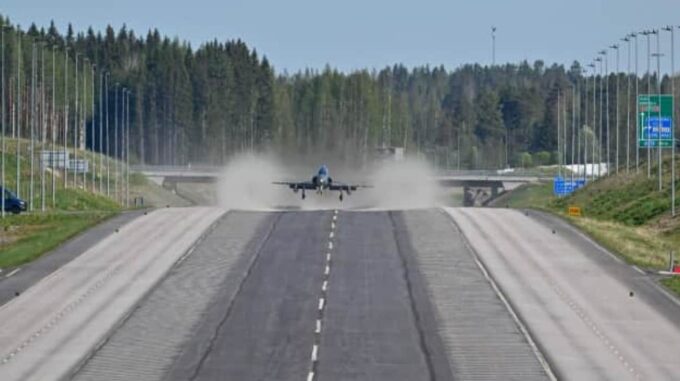NATO countries completed a complex and highly significant test of their ability to respond quickly to the challenges of the modern defense environment by conducting a series of operations in Finland and Sweden, involving a sophisticated maneuver of deploying combat aviation on highways

This innovative tactic became a key component of large-scale military exercises called JPH, which took place from May 26 to 30. The Joint Air Command of NATO reported this, confirming that such activities represent another step in strengthening the defensive capabilities of alliance member countries in the Northern Europe region. These military exercises were carried out in the context of preparing for potential scenarios requiring rapid and effective force relocation in the face of external threats or aggression. Special emphasis was placed on maneuvers under unexpected conditions, including landings and takeoffs of combat aircraft directly on roads, significantly complicating the enemy’s chances of predicting and countering such actions. More than twenty modern NATO military aircraft, along with nearly two thousand military personnel, were involved in executing tasks of various complexities. Specifically, during the special phase Baana, combat aircraft operating in the Finnish Air Force, including F/A-18 Hornets and training fighters like the Hawk, were deployed for the first time. They performed short takeoffs and landings on the E75 highway near Tikkakoski Air Base in Jyväskylä. This experience proved valuable for restoring and enhancing the mobility of aviation units in real combat scenarios. Equally important was the first experience of Dutch Air Force helicopters: multi-role F-35A Lightning II jets, belonging to the fifth generation of fighters, conducted takeoffs and landings on highways as part of the exercises. This highlights their integration with traditional ground routes and increases the ability for rapid mobilization during conflicts. Meanwhile, in Sweden, closed exercises involving short-term takeoffs and landings of military aviation on limited sections of roads were conducted. Swedish Air Force military transport aircraft, such as the C-130 Hercules, along with units from Norway and the joint German-French BATS formation, participated. These aircraft groups practiced rapid and precise maneuvering under constrained conditions, which is especially relevant for defending against potential blockades or surprise attacks. It is worth noting that these exercises are centered around the ACE (Agility, Command, and Control) concept, which allows forces to reorient quickly, respond rapidly to changing situations, and thereby increase mobility and readiness. Overall, such drills underline NATO’s commitment to being as adaptable and mobile as possible under today’s security crisis conditions, strengthening regional forces’ ability to respond to any challenges. The use of highways for deploying military aircraft not only complicates enemy efforts to predict military actions but also demonstrates new approaches to defense tactics in Northern Europe. In the lead-up to these exercises, military maneuvers in the Baltic states have intensified: in Lithuania, large-scale military training involving local and allied NATO forces is underway to strengthen defensive capabilities and prepare for potential threats. Poland has announced its own military exercises in response to the large-scale Russian-Belarusian "Zapad" exercises taking place in Eastern Europe, which serve as displays of force and efforts to enhance regional defense capabilities. These activities underscore a trend toward increased military readiness and the growing ability of NATO countries to respond to any crisis scenarios in Northern Europe and the Baltic region.

